Photo: ANGST x MYST: The Devil’s Masquerade by Luc Bertrand
It’s Saturday evening and after having received coordinates, I end up sitting in an Uber taking me far into the banlieue (outskirts) of Paris. Sitting next to me, is my best friend, hiding her tight latex top and skirt underneath a long coat. As the city lights start to fade, I wonder, how did I get here again? It had been one month ago since I asked myself that simple question ‘What about Paris?’
After meeting up with several rave collectives to talk about the city’s brooding rave culture, it has become clear that the go-to-rave tonight is MYST’s ‘Chapitre VI: Latex Antique.’ The dresscode of the evening reads ‘Latex Antique: The history of ancient greece, with clothes, togas, draperies, much darker than remembered. You are expected dressed in your most decadent outfits. The tone is set. We strongly encourage all sartorial madness, from the most bare and odd to the most covered and dressed up.’
Full of energy and excitement, we get dropped off in a street packed with rows of houses – all of them with window blinds closed. Apart from the group of shadows in the distance, the street looks rather abandoned. We walk up to the group and as I get closer, my eye lands on a girl’s fishnet panties and I realize we must be in the right place. We’re standing underneath a sign that once lit up the words ‘Repair station.’ A man walks past and keeps staring at us as he walks further down the street. I realize that it must be unclear to outsiders who or what we’re waiting for.
Two big tall muscled men – who look like you wouldn’t want to mess with – stand in front of two metal doors in front of us. We greet them and as they open a smaller door within the big door, they wave us in with a friendly smile.
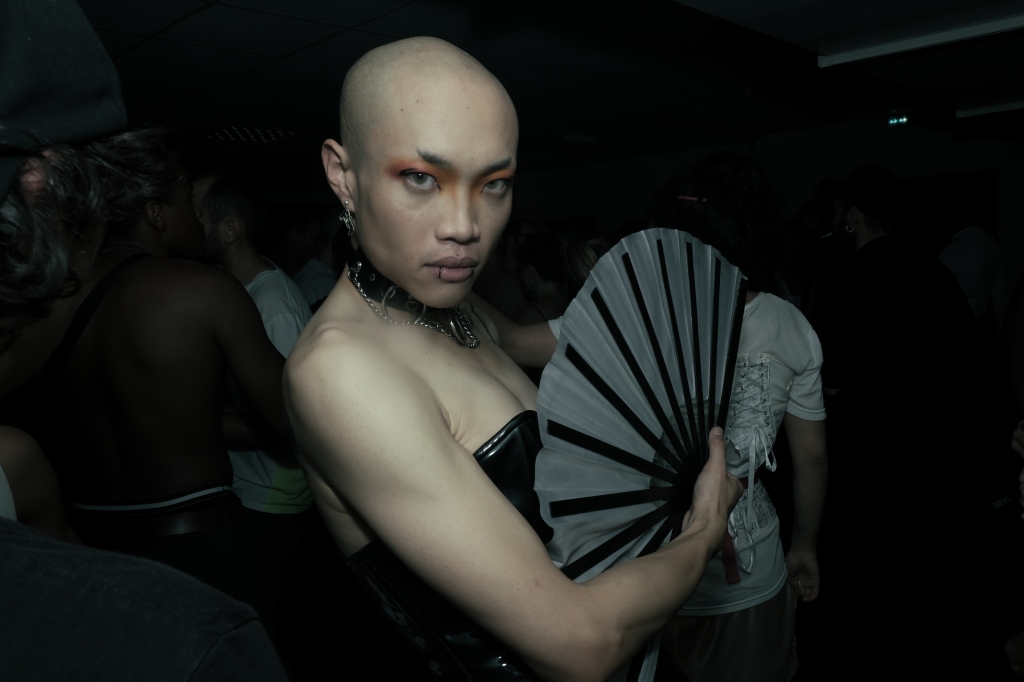
Photo: MYST: Latex Antique by Victor Maitre
We end up in a crowded alleyway and I can’t believe what I’m seeing. People in the most odd and extravagant outfits fill up the tiny street. I walk past a tall guy in a long latex coat, and as the cigarette smoke dissolves in the cold autumn air, it reveals the eyeliner on his face, starting from his eyes and forming into a dragon covering half of his face.
Facing him is a girl with a dagger tattoo in her neck. I see a guy with the most beautiful black shades, covered in pearls. A girl stares at me and the icy lenses in her eyes stand out from the abundance of black eye shadow on her face. I’m mesmerized by creativity, surrounded by people in their DIY outfits. I notice how the city’s feeling for fashion, is reflected in the rave scene and it feels to me, somewhat ‘rave-chique.’
The energy in the queue is tense and I can feel how everyone’s excited for the night. In her self-made crown and kimono, co-founder of MYST, Mélissa, welcomes us to the event. The cameras on our telephone are covered with stickers, meaning a no-photo policy which ultimately contributes to creating a safe space. We open a set of swinging doors and as we walk down stairs, we pass a big rainbow flag hanging on the wall. We’re walking down a long hallway and as the end of the tunnel nears, we look at each other with mouths wide open.
We’re standing in an immense underground warehouse. Loud industrial techno is filling up the concrete room. Hanging on the walls we see big white sheets with drawings of Roman like sculptures dressed in harnesses and chains with knives, portraying what looks like a modern-day Sodom and Gomorrah drawing to me.

Photo: ANGST x MYST: The Devil’s Masquerade by Luc Bertrand
We move on to the next room that looks like a former arcade hall. Purple lights fill up an area packed with people taking off their clothes. In the distance I hear local talent ABSL kicking off the night and as I take a quick peek, I see that people are already climbing up the stage, dancing wild under the strobe lights. Suddenly, I hear I Hate Models’ his track ‘It Will Last Forever’ blasting down the warehouse.
As the event nears its end, I walk back up into the alleyway and the friendly bouncers wave us goodbye as we walk through the metal doors. Dawn is breaking, the street is silent, there’s no one to be seen, and as we stand somewhere in the middle of nowhere, my friend and I look at each other, trying to grasp what we had just experienced.
Welcome to the underground rave scene in the banlieu of Paris.
Over the past four years, the outskirts of Paris have been a hotbed for raves. From warehouses to caves, rave collectives are making their move on the scene. Because too many understood the scene’s appeal at the same time, this has come with complications. Gentrification, competition, organizations hunting down raves, warehouse buyers and the city’s vision on repressing alternative electronic music culture seem to be forming a danger to alternative and free nightlife in Paris. So when a rave takes place, it comes with a magical and underground atmosphere, one where raving is more than fun, it’s setting a statement, it’s politics. In order to understand the present situation, I meet up with rave promoters Sylvain & Pierre from ANGST, Mélissa from MYST, Sina from Subtyl and François from Némésis and dive into a scene they associate with the words, ‘Subversive, immersive, queer, conflicting, exciting, punk, uninhibited, surprising.’

Photo: ANGST x MYST: The Devil’s Masquerade by Luc Bertrand
Raving in other countries in 2019 often leads to places like Berlin, London, Amsterdam, Ibiza, Tbilisi or Eastern-Europe. Paris however, is not the most commonly thought of destination when in search for a good party. This surprised me, as the city is known for its art and fashion scene, drawing in many creatives that are usually associated with underground and alternative electronic music scenes. After doing research, it hit me that the information about Paris’ electronic music and rave scene was scarce. The information available – usually in French – gave me the impression that the scene is a rather local one. I decided to dig deeper into the city’s electronic music history to figure out how it has influenced the present situation.
Rave culture spread like a virus in the UK in the late 80’s but it was only until the beginning of the 90’s that it hit Paris. Raves hit empty theatres, abandoned warehouses and even the catacombs of Paris. It got out of hand and the mid 90’s saw a law passed that banned these events from the city. The general directorate of the national police entitled ‘rave parties’ as ‘high risk situations’ and ‘points of sale and use of drugs.’
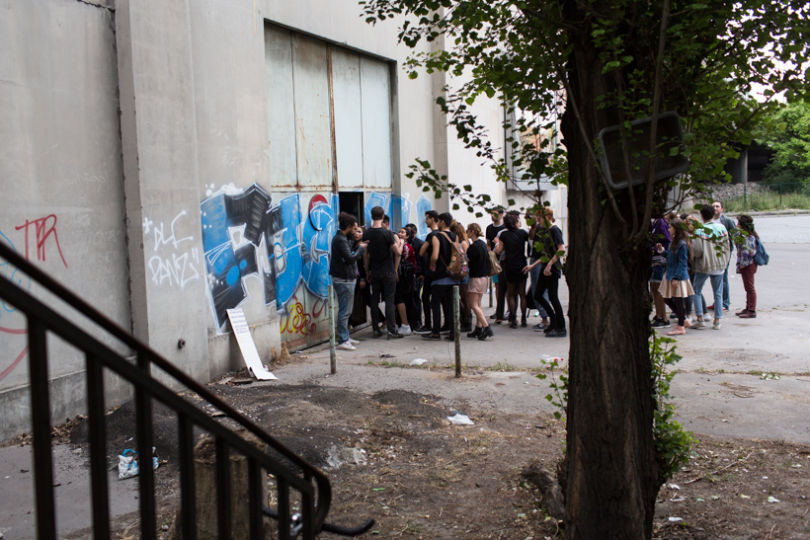
Photo: Jacob Khrist
The people of Paris were still eager to rave and in ’98 the first techno parade took place. Clubs like Rex Club – Paris’ oldest techno club that has been open since – were the focal point for the city’s electronic music scene and have been important for the foundation of Parisian club culture. Fading, however, was the democratic and free rave scene that once dominated the inconvenient and abandoned locations in Paris.
The 00’s marked a sober time for the city’s electronic music culture, the few electronic music clubs present were struggling and the rave scene was barely existing. Sina XX, DJ and co-founder of rave organization Subtyl explains, ‘Clubs in the 00’s were mediocre and so late in innovation in comparison to Berlin and Amsterdam. The design, the way people partied, the opening hours, the set lengths of the DJs, it all needed renewal. People went to other cities to party and draw inspiration.’
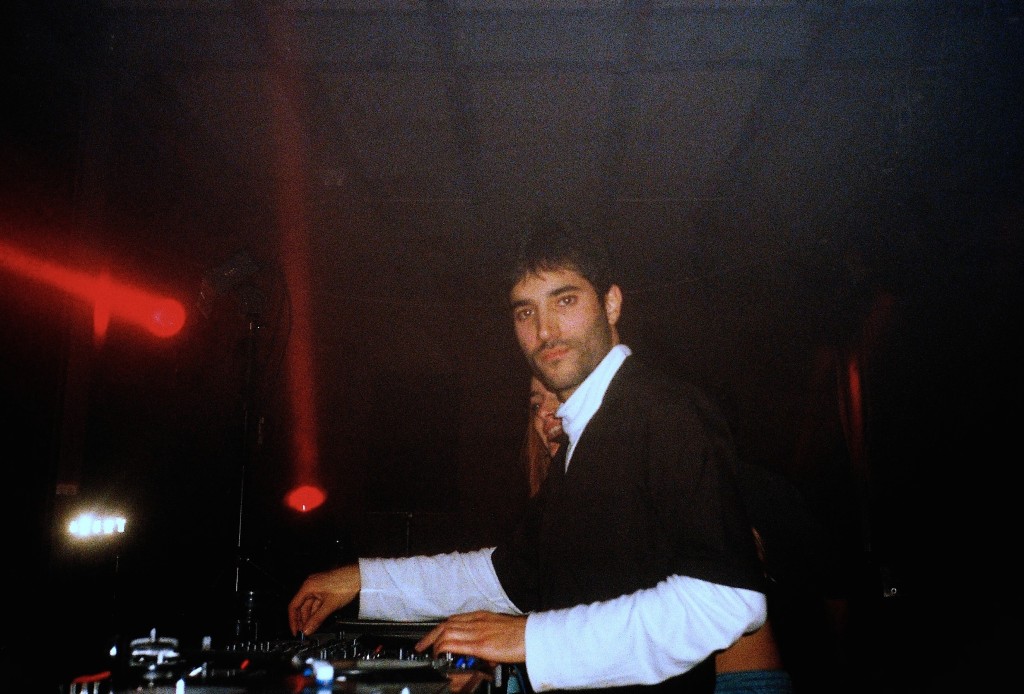
Photo: Sina XX by Anais Lalitte
In 2010, the NYTimes even published an article declaring Paris’ nightlife ‘in danger.’ The article read, ‘DJs and musicians have been abandoning the French capital, forcing a startling conclusion upon the city’s night life professionals: Paris may soon be dead at night.’
In 2011, things started changing for the better. Paris’ famous club Concrete opened, stationed on a three-level boat docked near the Seine. The club woke up the Parisian night at a time where it’s nightlife was sleeping and brought attention and life to electronic music culture.
At the same time people in the capital were growing tired of clubs and were in search for something more liberating and free. Brooding under the club scene, was an emerging rave scene with parties popping up in locations all over Paris. Suddenly, the suburbs seemed attractive and the squatters and rave promoters of Paris got creative, occupying locations like a disused slaughterhouse for horses, metro stations, art galleries, abandoned houses or even a former mirror factory called La Miroiterie.
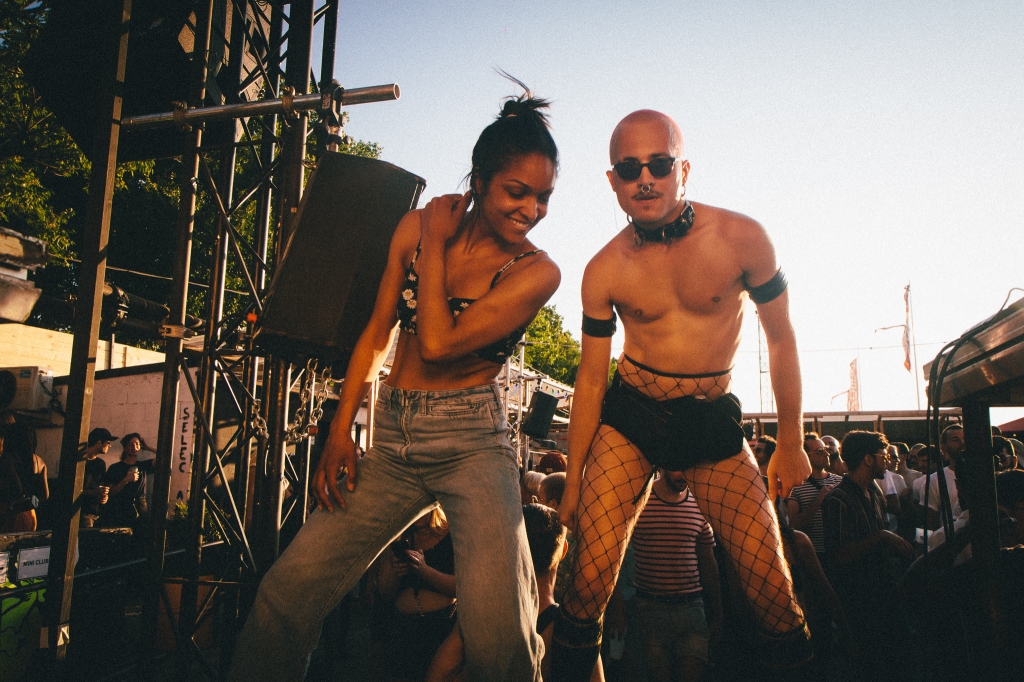
Photo: Subtyl by Romain Guede
Subtyl – under the alias of ‘Lost&Found Soulmate Club’ – was one of the first collectives to throw warehouse raves again. Inspired by the squat scene in Berlin and Rotterdam and fascinated by subversive culture and temporary autonomous zones, Sina wanted to create a safe and free space disconnected from nightlife business to unite different communities within the electronic music scene.
In the meantime, it was rave organizer Aladdin Charni bringing the city’s rave scene to a whole new level. Growing up in the suburbs of Lyon, Aladdin quit high school at 17 years old and moved to Paris where he started squatting. He organized raves in caves under the name of Le Mont C. After that he found a location under the Grands Boulevard, in toilets that had been abandoned for over thirty years. Separated into two small spaces, Aladdin threw illegal underground raves under the name of ‘Le Pipi Caca Poney Club’ literally translating to the ‘Pee Poo Poney club.’
The political unrest that came with the events of Charlie Hebdo in 2015, came with Fox News declaring ‘no-go zones’ in Paris, marking certain districts as unsafe. The rave scene saw this as an opportunity, as raves were organized all over these districts. In 2015, Champ Libre saw it’s rise, a rave stationed in a basement that was used as a coal stockpile for railways nearby. In the meantime, the famous ‘Pipi Caca Poney Club Closed’, but saw the rise of a phenomenon that has made an unextinguished impression on Paris’ alternative and underground electronic music culture.

Photo: Le Péripate by Jacob Khrist
The successor of the Poney Club, was Aladdin’s new squat named ‘Le Pèripate,’ an uninhibited and free party on the northern outer end of the city under the highway that surrounds Paris. With Le Péripate, Aladdin created a safe space with an underground and queer vibe, something he had missed in Paris as the city’s electronic music scene at that point was a scene dominated by straight white males. It was more than just an event, with Le Péripate, he offered a safe haven for migrants and LGBTQI+ people and opened up a Freegan restaurant within the squat focussed on reducing food waste.
Le Péripate didn’t go unnoticed within Paris’ fashion scene. Vogue described the crowd at the raves as ‘Drag queens in spangled costumes, Berlin party-goers, bare-bodied men with big moustaches, fluttering from beat to beat.’ Sylvain, co-founder of rave collective ANGST explains the phenomenon, ‘Péripate gained reputation all accross Europe as the new cool thing, and since the fashion and the queer scene in Paris have a lot of people in common, it started to get trendy – that’s probably what cost it a bit of its vibe. Fashion houses started to look at Peripate as a potential fashion show or after show location and it’s funny to see how a whole industry started to get interested in the outskirts of Paris, which no one had a clue of the reality of before, and probably still does not.’
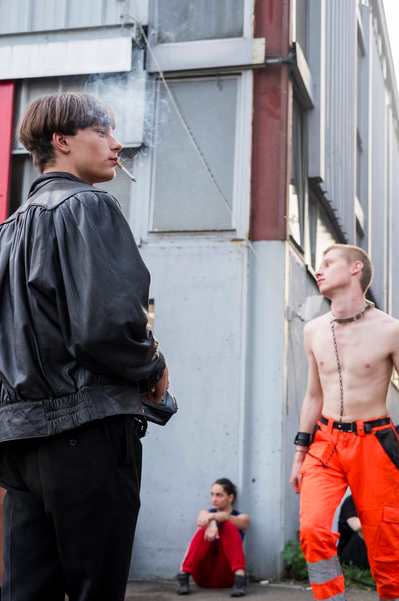
Photo: ANGST x MYST: The Devil’s Masquerade by Luc Bertrand
Unfortunately, Le Péripate was forced to close in 2016. While the squat closed, the second wave of rave collectives made their move on Paris’ rave scene, all understanding at the same time the gap there was to be filled, the business opportunity to it and the appeal it had to people.
‘There were many one-edition raves. Many of them did not survive because there was too much competition and to few locations,’ Sylvain explains. Some of the stronger of them managed to survive: MYST, ANGST, Némésis, Possession, Fusion Mes Couilles, Spectrum, Contrast, BNK, Fée Croquer and Mea Culpa quickly built a name for themselves and have found themselves on the forefront of Paris’ rave scene, becoming unmissable.
The result of the scene’s accelerating growth has come with complications that are now forming a threat to the survival of the city’s alternative electronic music scene. In a city that’s facing gentrification on a continuous level and where the city is repressing its nightlife culture, organizing (semi-legal) raves or manifesting club culture is challenging enough on its own. What makes it even more challenging is competition. There’s a small network of rave collectives supporting each other unconditionally, strengthening each other and helping each other out. Apart from that, words that are commonly associated with the scene are ‘business’ and ‘competition.’

Photo: ANGST x MYST: The Devil’s Masquerade by Luc Bertrand
Gentrification has pushed creativity in finding locations which has led to the rise of semi-legal raves. In short, this means a rave promotor enters a contract with the owner of a venue but doesn’t possess a license to organize an event. They are renting a venue from someone that has certain unwritten agreements that will keep the police away. It costs a lot of money but in return, rave collectives get a safe space.
François, co-founder of rave collective Némésis explains the game to it. ‘There’s people in Paris, trying to find rave locations which they then sell or rent out to rave collectives. There are like three to four people who do it. If you don’t ask these specific people you won’t find any locations, or you will and then it’s more likely that police will show up.’
Even more challenging are the power relationships within Paris’ rave scene, Sylvain and Pierre explain. Currently, there’s a monopoly that comes with locations. One or two rave organizations own almost all of the venues, if collectives aren’t within their network, they’re without power as venues become too expensive to rent. ‘It’s complicated and it’s sort of like a mafia you have to deal with as you have to go through people for locations. Because of this, some rave organizations decided to come together so we could all be aware of who is doing what and how, but as much as those platforms help scene veterans and newbies to co-exist, the reality of the present competition always threatens to show its face.’
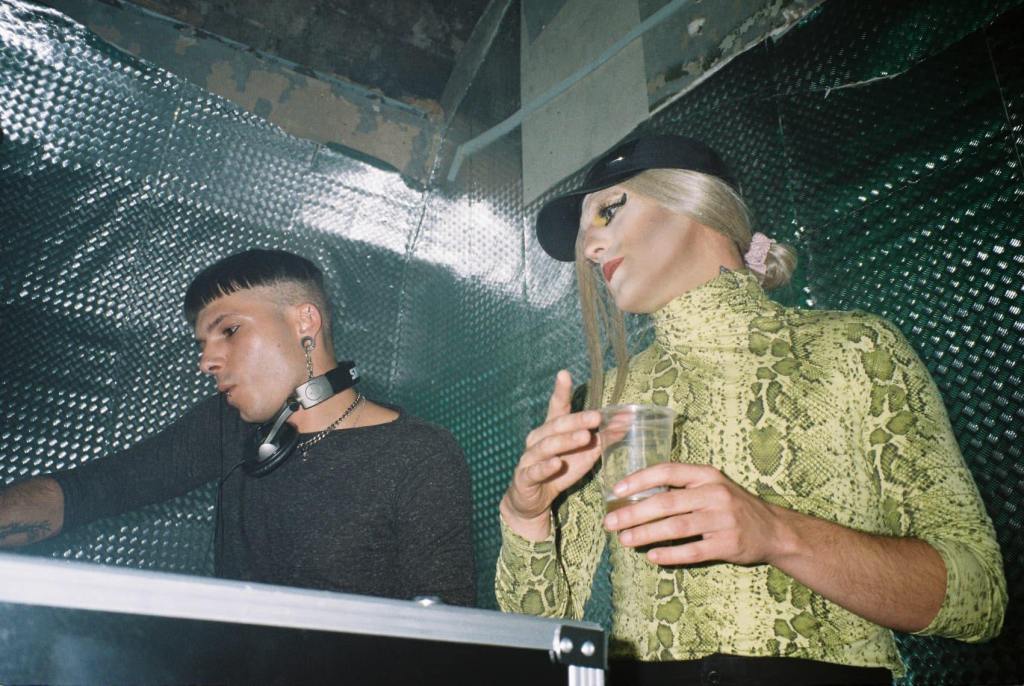
Photo: Pierre (left) & Sylvain (right) from ANGST|SPLEEN FACTORY
‘All things are a business,’ François adds to this, ‘because there are a lot of people going to raves, the business factor is high to it and a lot of organizers just do it for the money.’ Coming from Bretagne in the west of France, where there is a free party culture, François was surprised by the competition in Paris’ rave scene. ‘It’s difficult to see, because in Bretagne, every collective within the scene, is supportive of each other, we’re all friends. There is little competition, we come for a good sound system and for good music, we don’t do it for money, we do it for fun. We even help each other out financially. But here in Paris people are like ‘’Are you throwing a rave? Great, me too. But if I can kill you, I will.’’’
But it gets more complicated. There’s a state association of different LGBTQI+ friendly establishments associated with taking down raves. These raves, according to Le Péripate, are shutting down because they’re being called on by people that rule the legal parties in Paris. The famous Péripate, was one of its victims. On the third of October, the Péripate issued a statement on Facebook that two members of the SNEG ‘Took advantage of their position to denounce places and collectives that do not suit them. It is particularly saddening that such an attack comes from the LGBTQI+ community. The police prefecture, attentive to their arguments, logically put pressure on us to stop any event.’
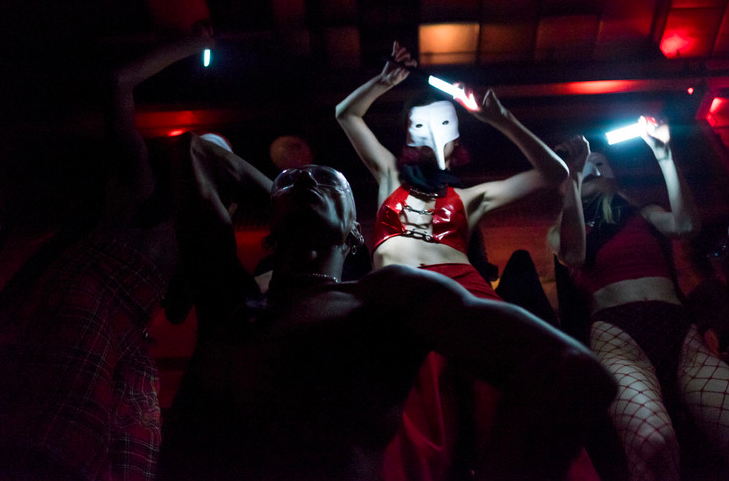
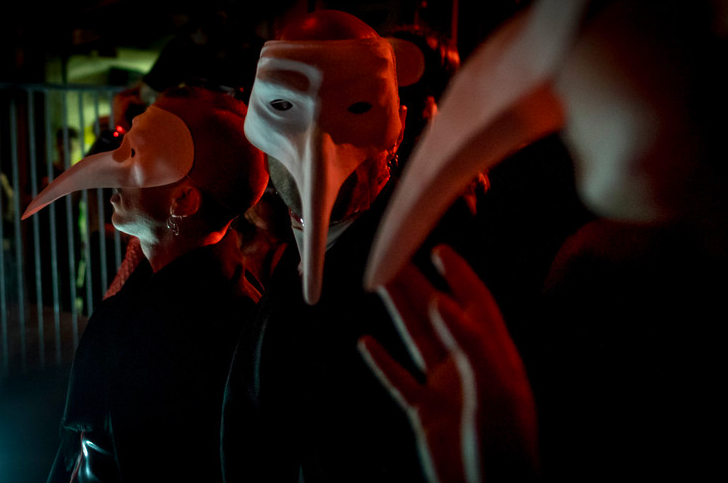
Photo: ANGST x MYST: The Devil’s Masquerade by Luc Bertrand
A paradox when you think about it, with the roots of raving and electronic music culture stemming from the queer community in the first place. The problem however lies again in the business factor to it. The association tried to attract rave promotors to organize queer parties in their clubs or establishments to vamp it up, but that didn’t work out. Accordingly, that’s when they, started to point fingers at rave promotors, suggesting illegal things were happening.
Sina adds to this, ‘The club union has put pressure on the government, accusing illegal raves to be a form of unfair competition. That’s typically French: when a business goes bad, they find a culprit instead of looking for solutions. On the other hand, given the amount of work they have to do to acquire their licences – which is almost impossible – I can understand where they’re coming from. The club union’s goal is to protect their businesses and that’s what they did.’
Sina tries to emphasize the importance of collaboration against competition, ‘Instead of creating a war, I took time to talk to their boss and express to him how our scene is actually important to his businesses. The idea was simple: the artists that are going to bring listeners to the club in the next years are actually found in the illegal scene first. If they kill it, they will basically kill the creativity that makes nightlife interesting.’
In order to combat this problem, groups have been organized from within the rave scene to unite and strengthen collectives and support each other, Sina explains. ‘Money attracts vultures. Unfortunately, there are too many business people and fake renters benefiting from the lack of experience of young people wanting to organize cool events. As a result, we created a union called SOCLE (Syndicat des Organisateurs Culturelles, Libres et Engagés) to avoid such situations.’
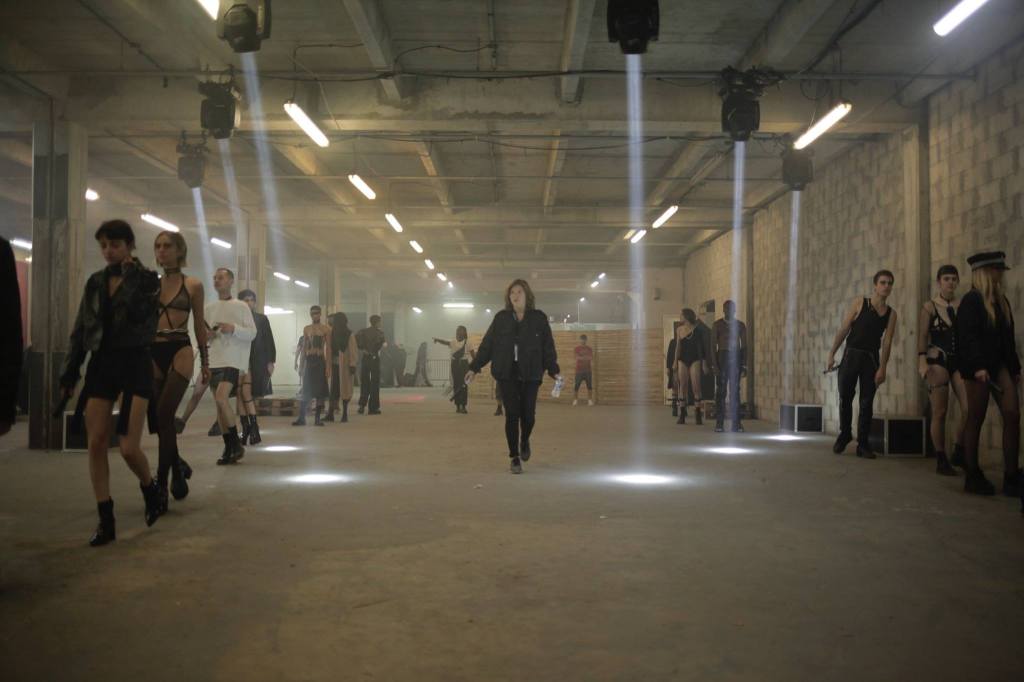
Photo: Mélissa, co-founder of MYST
What about the city’s stance on electronic music culture? Mélissa, co-founder of rave organization MYST expresses her worries with Paris’ approach. ‘France and the city are more and more repressing this culture instead of supervising it, because of the bad press coming from these events instead of showing it’s a culture that is just about passion and freedom.’
‘It’s difficult to acquire licenses and music events are supervised by the department of police in charge of prostitution and drugs,’ Sina explains, ‘that says a lot about the perception of that culture.’ According to Sylvain the city ignores that it’s happening, ‘They keep on shutting down places thinking it’s going to be a solution to conflicts with drugs or drug related deaths. The only solution that it brings is that when you shut down a space that has been designed for partying in a safe way, people are going to party anyway, but they are going to take risks.’
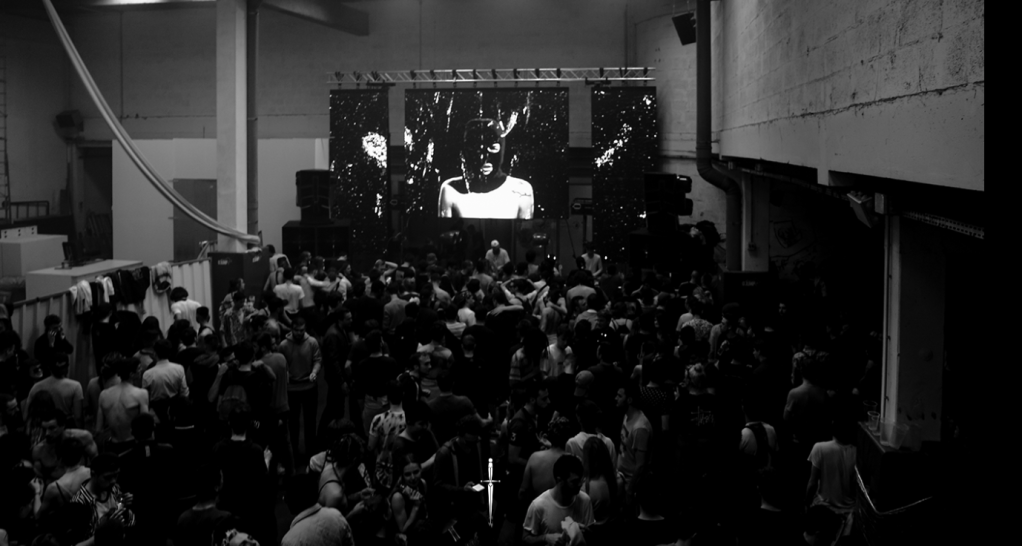
Photo: Némésis warehouse rave
When Le Péripate was shut down, the founder issued a statement on Facebook, expressing their discontent with the city’s approach towards dealing with drug related conflicts. Reflecting on how it’s the government’s responsibility to take action and to not blame rave culture for being responsible.
The post read: ‘Drugs happen everywhere in the Parisian night, it’s an issue to consider in all of the evenings. The difference is that our relationship to these issues is a realistic, honest and above all effective approach. Refusing to deny its existence, we prefer to engage in prevention. The associations and the public authorities are unanimous in saying that our action is exemplary and goes far beyond what we should do. Are there risk prevention stands in the premises of those who have denounced us? Prevention, caring, and consent are the values we defend.’
Right now, the government is stepping up their game in trying to repress these parties. Currently, the city is trying to take upon a law that looks rather similar to the Criminal Justice and Public Order Act, a law that was passed in the UK in the 90’s that prohibited musical gatherings with repetitive beats. Melissa explains, ‘The last law they wanted to pass was to vote on whether you have to declare all gatherings of less than 500 people. That basically means that when you’re organizing a barbecue in your backyard, you have to declare it at the police or city hall. If you’re not doing it, you have to pay a minimum penalty of 3500 euros and do 400 hours of community service. Imagine what they will do for parties with more than 500 persons. I just can’t understand why the city won’t help us with fostering a climate where people can party in a safe and secure way, which is mutually beneficial. Instead of chasing people out of the events and leaving them on public roads in the middle of the night – which creates more problems in the end for everyone and putting them in danger at the same time.’

Photo: ANGST x QUEERCORE by Luc Bertrand
François is worried about the capital’s rave scene and explains that rave promoters need to watch out for police, as they’re currently on the organizations. For Némésis this meant taking a pause. For others, it’s taking the risk anyway. But the risk is one you have to pay a price for, with the average rave ranging in between 20.000 to 50.000 euros to organize. Apart from losing money and having the police on your back, there’s enormous fines.
For Subtyl, this has meant making the move on to the legal scene and moving their raves to clubs. ‘It remains tough on the nerves, notably dealing with the authorities. It takes a lot of diplomacy and smooth talking. Last year we opened our own venue which was raided five times in only three months. The first time Subtyl’s venue Megadestock was raided by 30 cops with heavy guns – at 10 am after 11 hours of parties, and while I was doing an improvised b2b with Lacchesi, I had to find clarity within a snapshot to talk them out of the place (which they had entered because the security was sent home). It’s a legendary moment that I still hear about often, but afterwards, I had a file at the Préfecture (main police office) and they started research on me. As the president of the non-profit, I’m the only person accountable and it cost a lot of money.’

Photo: Street art Paris by David Wouters
Sylvain and Pierre of ANGST add to this, ‘Lately, police has been shutting down many raves. It’s fucking expensive and the risk is big. When we did the ANGST x MYST rave, we both lost our locations the week before our raves but ended up finding a warehouse in the outskirts. We were running some sound tests and knew that was the moment people could come and start complaining as there were houses a couple of blocks away.’
‘So it happened,’ Sylvain explains, ‘A tall muscled guy came, he was like the shape of a moon. He told us he was going to slay everyone in the building if we wouldn’t stop because his kids had to go to sleep. We were all super scared and thought we had to cancel the whole thing. Mélissa then talked the guy out of the situation and he left wishing everyone a really good party. Pierre and I looked at each other and thought: how do you do that? It all turned out well and we set our stone with ANGST, but we took a big risk and it could have cost us a lot of money. If the rave doesn’t reach the audience or the police comes, you can ask yourself how you’re going to pay your rent the next month.’
For ANGST, this also meant moving from the illegal rave scene on to the semi-legal scene with their exciting residence in a dark and grimy cave of Paris intramuros, ‘The place really fits in our formula. We brought the freedom from the warehouse to the location. It’s quite hard to find this combination. With our last party it was 800 degrees inside, we couldn’t even light up cigarettes because there was not enough oxygen inside.People were going wild and most importantly, the crowd was open-minded and they all took care of each other. It had everything. With it we want to push for a more inclusive dancefloor.’
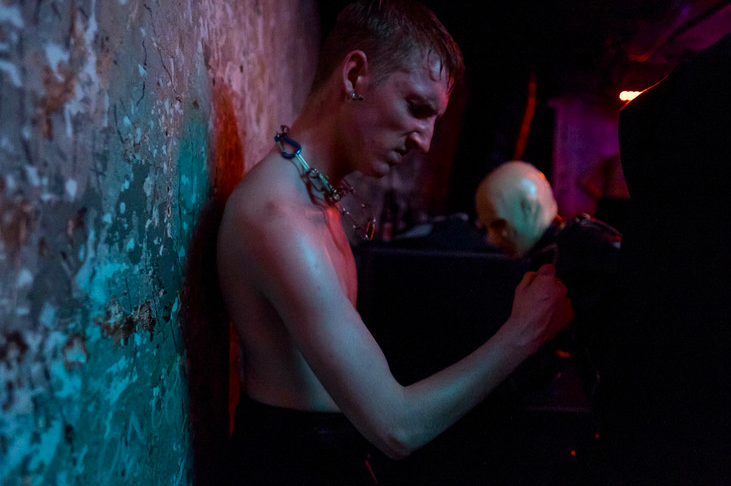
Photo: ANGST x QUEERCORE by Luc Bertrand
In spite of being on a hotbed right now, the rave scene continues to exist and collectives are not backing away. The danger that comes with organizing a rave however also comes with an electric vibe, an underground feeling and a magical atmosphere that can be experienced nowhere else, knowing it can be the end at any moment. For these rave organizations, it’s more than just fun, it’s political.
‘For us it’s a statement to offer people a bit more freedom than they get on their daily activities,’ Sina explains. ‘It’s a place with less control, no camera, no pressure. Currently, the European society is threatened by extreme right-wing populists, who are trying to set everyone up against each other. But alternative electronic music scenes are doing the exact opposite of that, they’re creating places where everyone is equal. A student can meet a laywer, who can meet a stripper who can meet a 45-year-old depressed soon-divorced-guy. The diversity of profiles makes raving a really interesting social environment where people who are traditionally apart, can come together. It would be nice to see that the media depicts us in this way, instead of just a drug-using scene that only comes with deaths.’
Mélissa explains the necessity of doing what she’s doing, ‘It’s quite frightening because you never know what’s going to happen. Sometimes I think of all the problems we can have by continuing to organize events like this and of course I am wondering how long I will be able to play with fire. But we are here to make a statement and to stand up for a more free nightlife in Paris.’
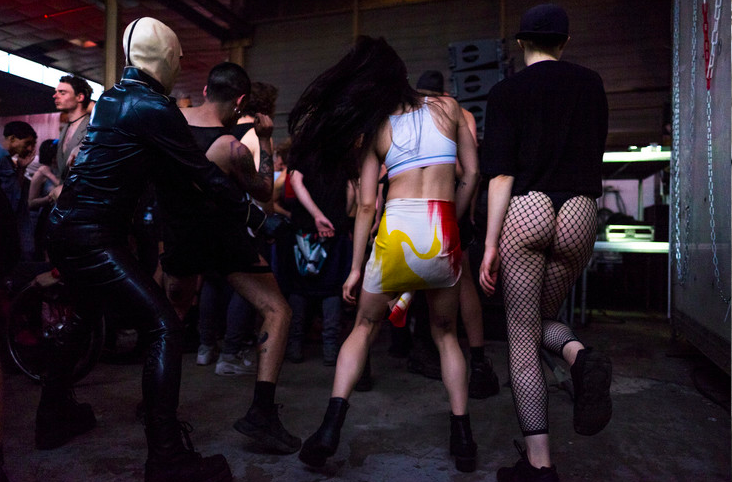
Photo: ANGST x MYST: The Devil’s Masquerade by Luc Bertrand
With MYST, founders Mélissa and Nicolas wish to make people think, to get them creative and to explore the deepest parts of themselves. ‘I felt that there was a need to create a party open to everyone and where people could feel totally free to get naked or come overdressed. It was also really important for us to push people to look further. That’s why we set up a theme on each event with a performance highlighting the theme. We wanted to get out from the cliché of what represents raving or techno in people’s minds. With this, Mélissa incorporates that element making Paris so attractive: fashion.
Coining the term rave-chique, Mélissa explains to me the correlation between the high emphasis on fashion and rave that MYST incorporates into their events. ‘We’ve been trying to create a relation between both worlds as we have a lot of friends working in the fashion scene. We’ve done three immersive fashion shows during our events, ranging from collections around the theme of our parties: Leather in Cage, Chromatic Cabaret and Space Punk. For Paris Electronic Week, we organised a fashion show on Club Kids together with our friends from the satiric magazine about fashion called ‘Nouvelle Vogue.’ Ever since then, MYST has become the rave that’s known for its artful way of partying to it.
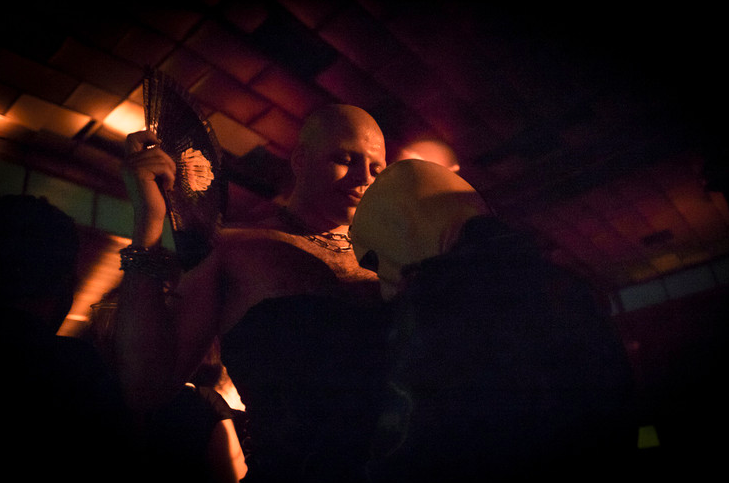
Photo: ANGST x MYST: The Devil’s Masquerade by Luc Bertrand

Photo: Leather in cage by Alexandre Desmidt
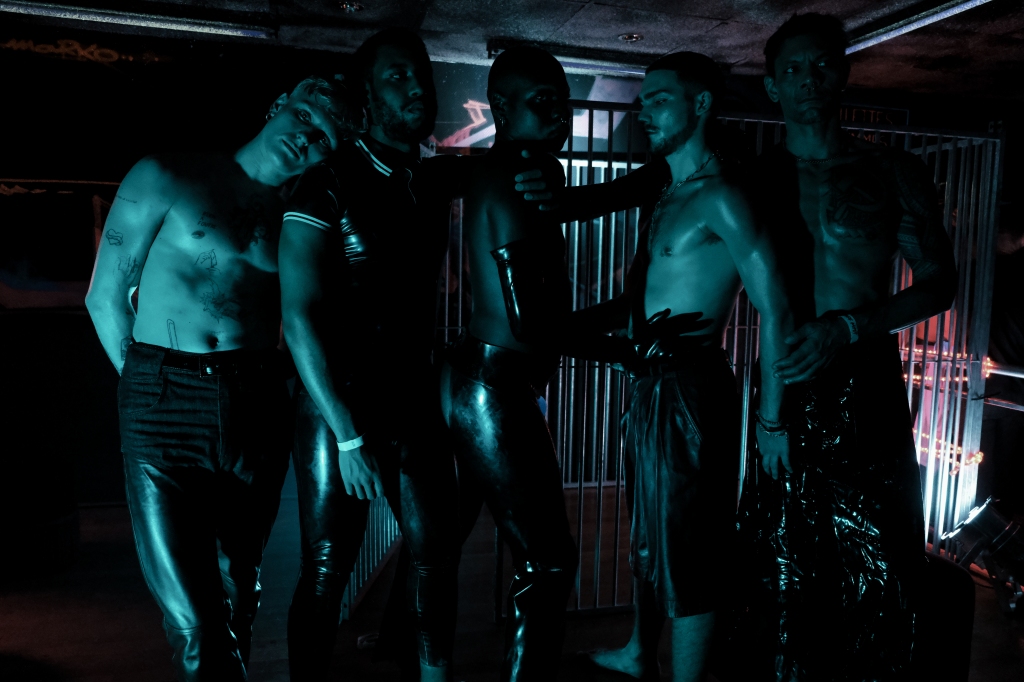
Photo: Leather in cage by Alexandre Desmidt

Photo: ANGST x MYST: The Devil’s Masquerade by Luc Bertrand

Photo: ANGST x MYST: The Devil’s Masquerade by Luc Bertrand

Photo: ANGST x MYST: The Devil’s Masquerade by Luc Bertrand
‘MYST is very special in that way,’ Sina explains, ‘they really invite their crowd to go wild on their style. You know, in France it’s always a little difficult to express your differences in the daily life. Therefore, when the night comes, and the place is safe, it really invites people to shine and not care about other people’s judgement.’
As for the future of the rave scene in Paris, it remains one that is unsure. Gentrification, competition and raving as a business, the police, the repressive nature of the city and the collective opinion of the scene all form a danger to the future survival of it. Regardless, collectives keep on fighting for the scene and with parties opening and closing, it’s a scene in motion. It’s one that is alive, brooding, creative and subversive. Currently, the move from semi-legal to legal venues seem more likely in the future. The first step in doing so has been set as Sina tells Cadence Culture, ‘Recently, I’ve been invited by the Mayor of Paris to talk about the difficulties of the underground scene. Hopefully, this could lead to finding new venues in a legal way.’

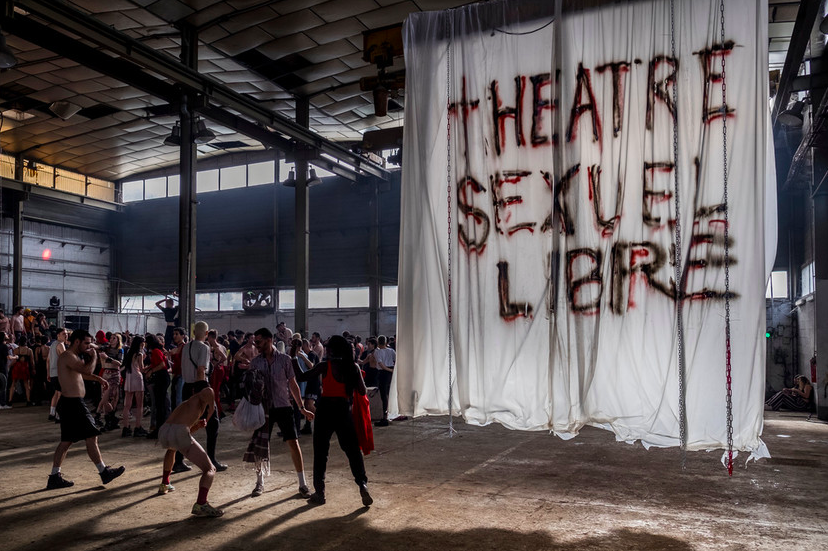
Leave a comment